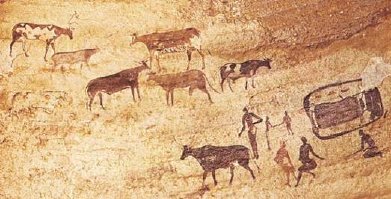What was a reason for the creation of art in African culture?
Art has been an integral part of African culture for centuries, and there are many reasons why it is created. Some of the most common reasons include:
To express religious beliefs and values. Many African religions place a high value on art, and it is often used to express religious beliefs and values. For example, masks, sculptures, and paintings may be used to represent deities, spirits, and ancestors. Art may also be used to tell stories about the creation of the world and the origins of humanity.
To celebrate important life events. Art is often used to celebrate important life events in African culture, such as births, marriages, and deaths. For example, colorful fabrics and masks may be worn at weddings and other celebrations. Art may also be used to create memorials for the deceased.
To communicate with others. Art can be a powerful tool for communication, and it is often used to convey ideas and emotions that are difficult to express in words. For example, proverbs and adages may be depicted in art, or artists may use their work to comment on social and political issues.
To decorate and enhance the environment. Art is also used to decorate and enhance the environment. For example, murals may be painted on the walls of houses and buildings, and sculptures may be placed in public spaces. Art can also be used to create functional objects, such as baskets, pottery, and clothing.
Examples of African Art
Here are some specific examples of African art that illustrate the different reasons for its creation:
The Benin Bronzes: The Benin Bronzes are a collection of brass plaques and sculptures created by the Benin people of Nigeria between the 13th and 17th centuries. The bronzes depict a variety of subjects, including historical events, religious rituals, and everyday life. They are believed to have been used to decorate the royal palace of Benin City.
Benin Bronzes
The Dogon Masks: The Dogon people of Mali are known for their elaborate masks. Dogon masks are used in religious ceremonies and are believed to have the power to connect the wearer with the spirit world.
Dogon Masks
The Kuba Textiles: The Kuba people of the Democratic Republic of the Congo are known for their beautiful textiles. Kuba textiles are often made from raffia palm fiber and are decorated with geometric patterns and symbolic images. They are used for a variety of purposes, including clothing, wall hangings, and bedspreads.craftatlas.co
Kuba Textiles
The Ndebele Murals: The Ndebele people of South Africa are known for their brightly colored murals. Ndebele murals are often painted on the outside of houses and are believed to protect the inhabitants from evil spirits.
Ndebele Murals
Contemporary African Art
It is important to note that African art is not simply a product of the past. Contemporary African artists are creating innovative and exciting work that continues to explore the themes and traditions of African culture.
Some notable contemporary African artists include:
Wangechi Mutu: Wangechi Mutu is a Kenyan-American artist who creates collages, sculptures, and videos that explore themes of identity, gender, and race.
El Anatsui: El Anatsui is a Ghanaian artist who creates large-scale sculptures from recycled materials, such as bottle caps and metal wire. [Yinka Shonibare: Yinka Shonibare is a British-Nigerian artist who creates sculptures, installations, and films that explore themes of colonialism and postcolonialism.
These are just a few examples of the many contemporary African artists who are producing groundbreaking work. African art is a rich and diverse tradition that continues to evolve and inspire.

